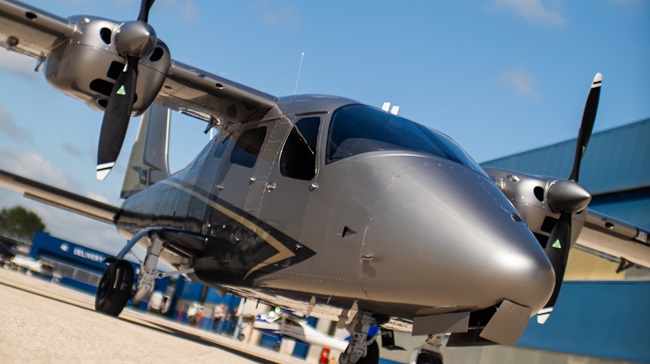Lithium sulfur or lithium ion?
Project to prove a power source
Electric aircraft developer Bye Aerospace and battery technology pioneer OXIS Energy have begun a project that the two companies unveiled last summer aimed at significantly increasing the flight time an aircraft can achieve on a single battery charge.
AOPA reported in August that Bye Aerospace, the Denver company working to certify the eFlyer 2 training airplane, is evaluating lithium-sulfur (Li-S) battery cells made by United Kingdom-based OXIS Energy for its next design, the four-place eFlyer 4. The eFlyer 4 will be a 2,700-pound IFR-capable aircraft with 4.2 hours of endurance and is projected to enter service in 2022.
According to the project update, the first step will be to test OXIS cells and modules against the performance of “existing and soon-to-be-announced Bye Aerospace aircraft. This will produce data that will demonstrate the advantages of the OXIS Li-S technology to the aerospace sector and more specifically, to Bye Aerospace’s future aviation applications.”
“We believe this collaboration will offer Bye Aerospace the confidence that OXIS Li-S systems will deliver the battery technology that meets the demanding performance and quality required to increase the efficiencies of their future electric aircraft,” said OXIS CEO Huw Hampson-Jones.
“The United States has an impressive tradition of aviators who understand the need to experiment and embark on the deployment of new innovative technology, thus effecting a seismic paradigm shift in the powering of aircraft from using lead based fossil fuels to Li-S battery systems that are free of any toxic pollutants,” he said. “As a consequence of the significant extension of aircraft flight duration, both companies believe this will allow for the widespread adoption of electric aircraft across the skies of the United States.”
George Bye, CEO and founder of Bye Aerospace, acknowledged the importance of next-generation technologies to companies working to keep pace with the “revolutionary trends of electric aviation and the resulting demands for more efficient aircraft.”
“OXIS Energy’s battery technology continues to be an important consideration, and we appreciate the opportunity to collaborate in this way,” he said.



